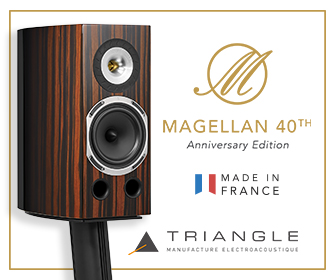Tracking Angle Exclusive: First Look at KLAUDiO’s Magnezar Turntable.
Michael Trochalakis spent a month with the first production model of KLAUDiO’s new turntable, the Magnezar.
Peter Cheon founded KLAUDiO approximately 15 years ago, starting as a DIY hobby. In addition to the now famous KLAUDiO Ultrasonic Record Cleaning Machine KD-CLN-LP200T (having sold into the thousands) and pivoted tangential tonearm (KD-ARM-AP12), Cheon has also designed and built vacuum tube amplifiers (using esoteric broadcast transmitter tubes), vacuum tube preamplifiers, vacuum tube phono preamplifiers, moving coil step up transformers, tone arm headshells, digital display level meters, silver audio interconnect cables, and aluminum take up reels. During the first five years of KLAUDiO, Cheon built tube amplifiers. He followed up with tube preamplifiers, the ultrasonic record cleaning machine, the pivoted tangential tonearm, and finally, a direct drive, magnetically levitated, auto clamping turntable.
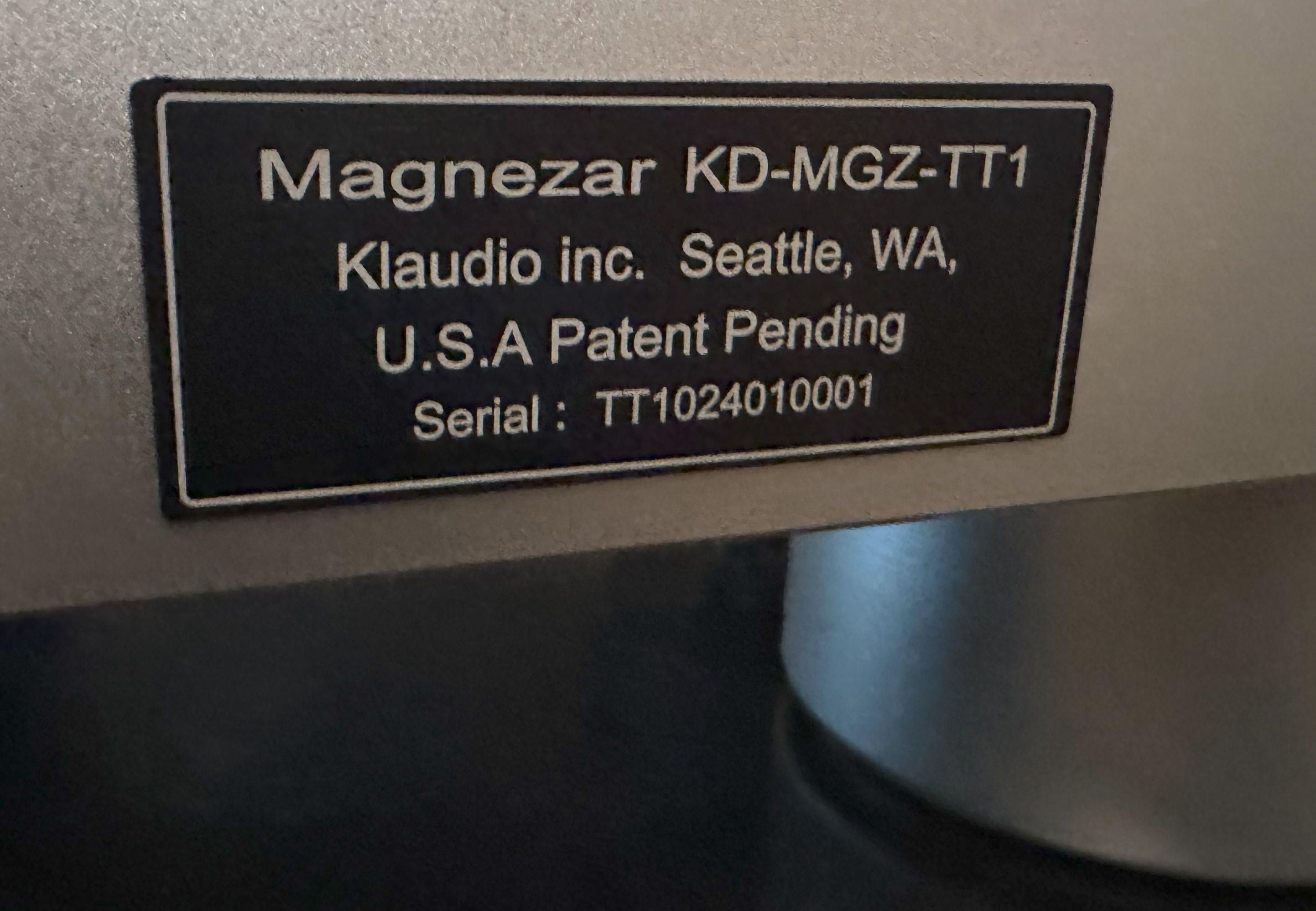
The prototype of the Magnezar turntable was showcased in July 2023 at the Pacific Audio Fest in Seattle, Washington. Peter began developing this turntable approximately four years ago. When asked what inspired him to design a turntable, he mentioned the challenge in designing a quiet direct drive motor.
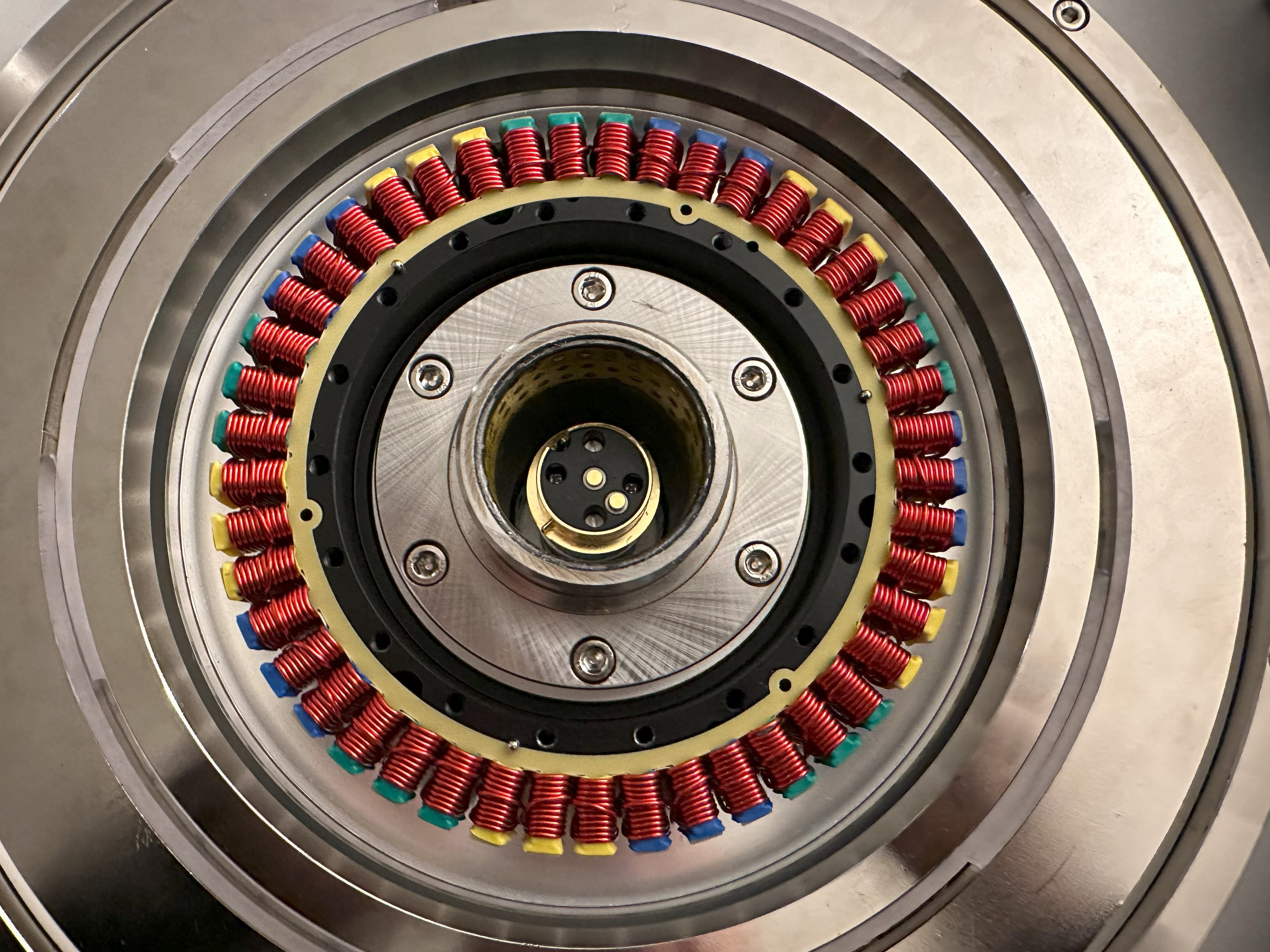
Cheon states that the direct drive motor sourced for the Magnezar is primarily used in robotics. The motor has forty-five poles, and can produce ½ horsepower at 1,800rpm, but runs much lower for driving the turntable’s platter. The motor design was created in house by Cheon himself, who has an electrical engineering background. Prior to starting Koolance, KLAUDiO’s parent company which specializes in water cooling solutions for industrial applications (such as computers, medical equipment, theater projectors), Cheon spent approximately ten years designing motor control mechanisms for factories.
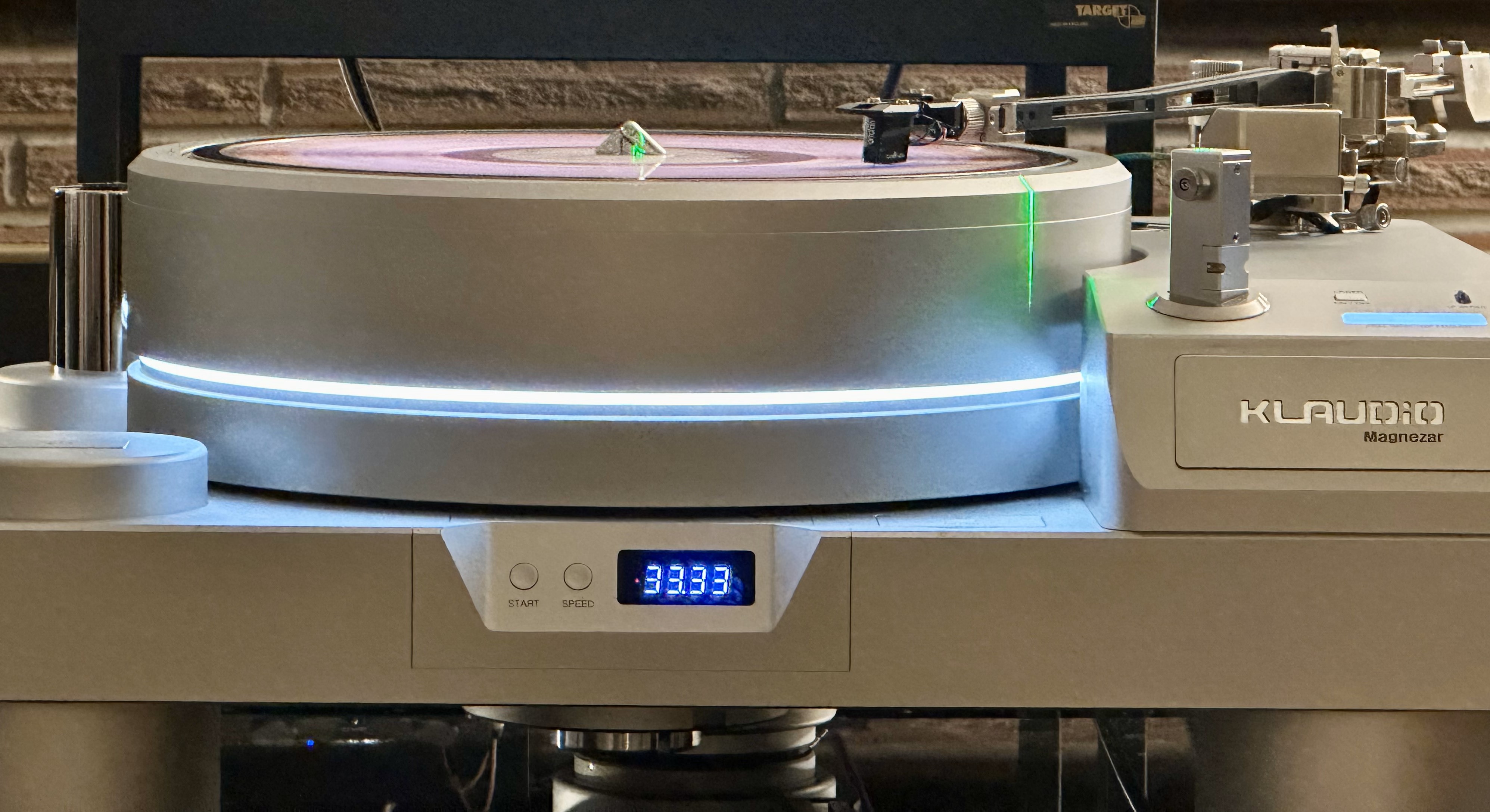
The Magnezar’s platter, which weighs 44 lbs., is permanently magnetically levitated, even when the turntable is not in operation. The levitation is implemented using opposing neodymium magnets. There is a 3-5 mm clearance between the base of the turntable and the levitated platter.
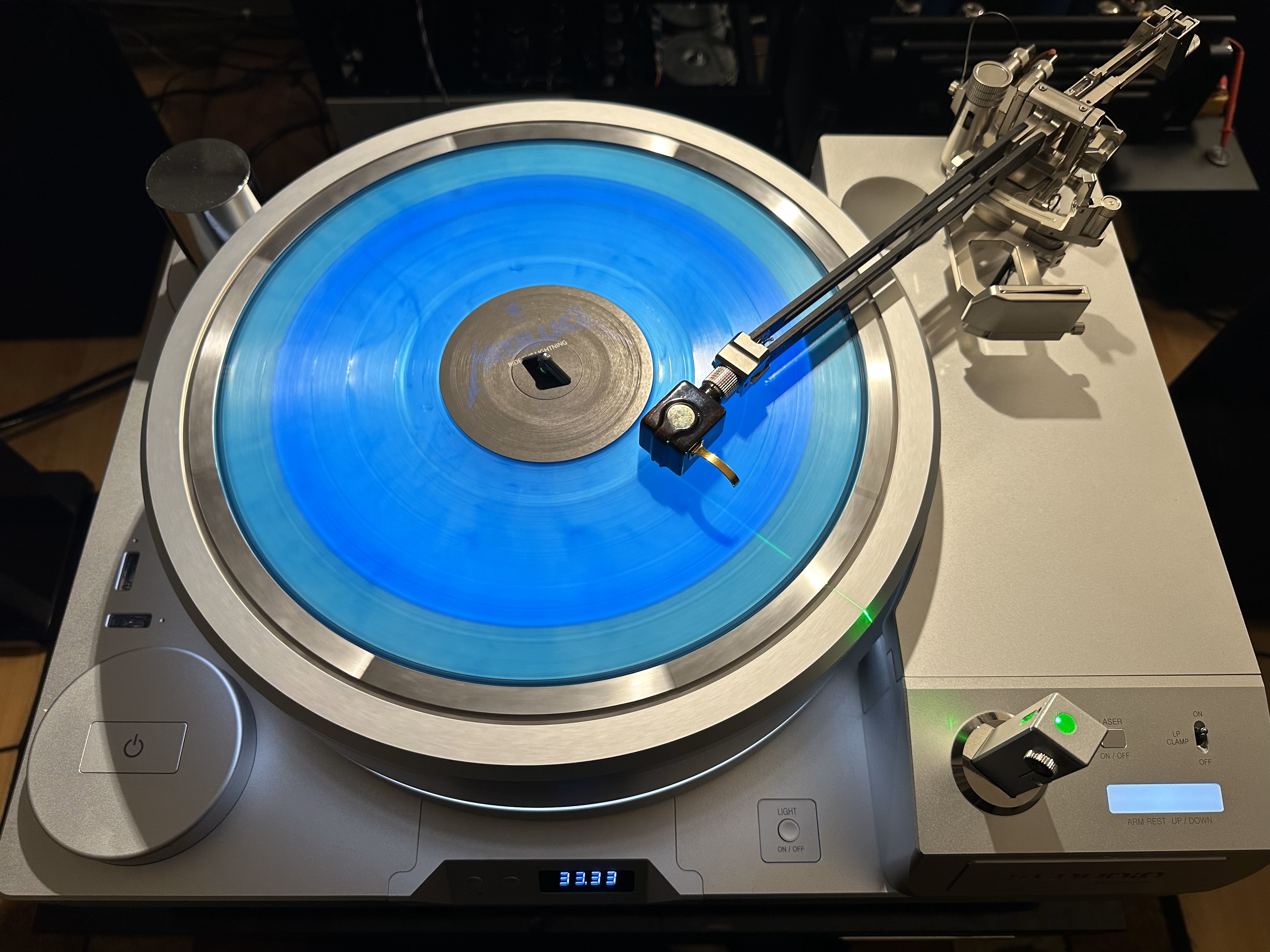
The sub platter, which is encased with blue water, weighs approximately 3 lbs., and sits inside the main platter. Cheon states that when the turntable is in operation, the water in the sub platter creates a centrifugal force around the circumference of the platter that helps reduce wow and flutter. Cheon observed a measured improvement of 0.01% in wow and flutter when water was added to the sub platter.
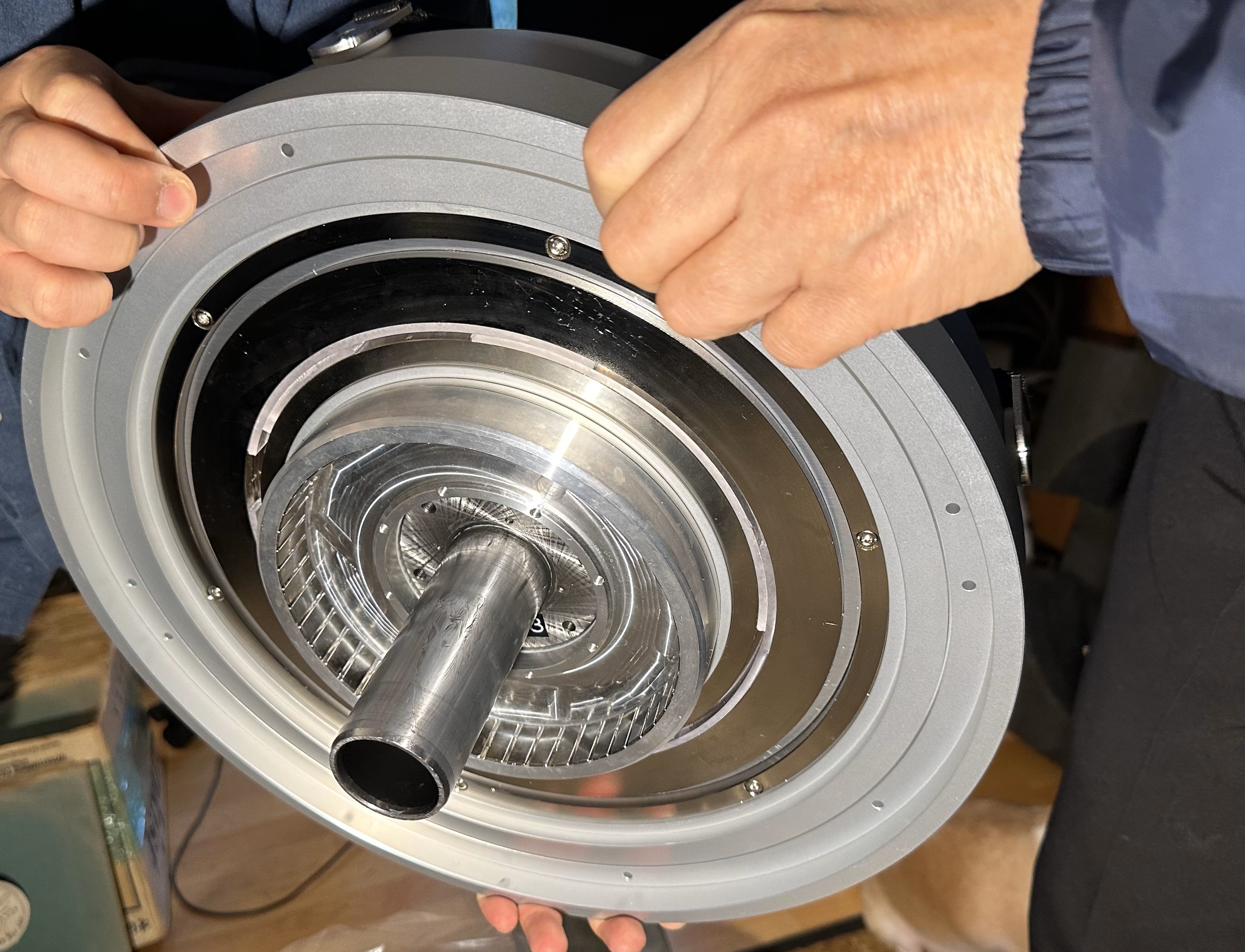

The turntable’s automated clamping system consists of two parts: a spindle and a periphery clamp. The spindle clamp is spring controlled. Inside the platter are two motorized actuators which control the automated outer periphery clamping system. The two clamp pressures measure approximately 3 and 10lbs, respectively. When the clamping system activates, the lower platter circumference displays a warm white glow. Cheon has a patent pending for this clamping system.
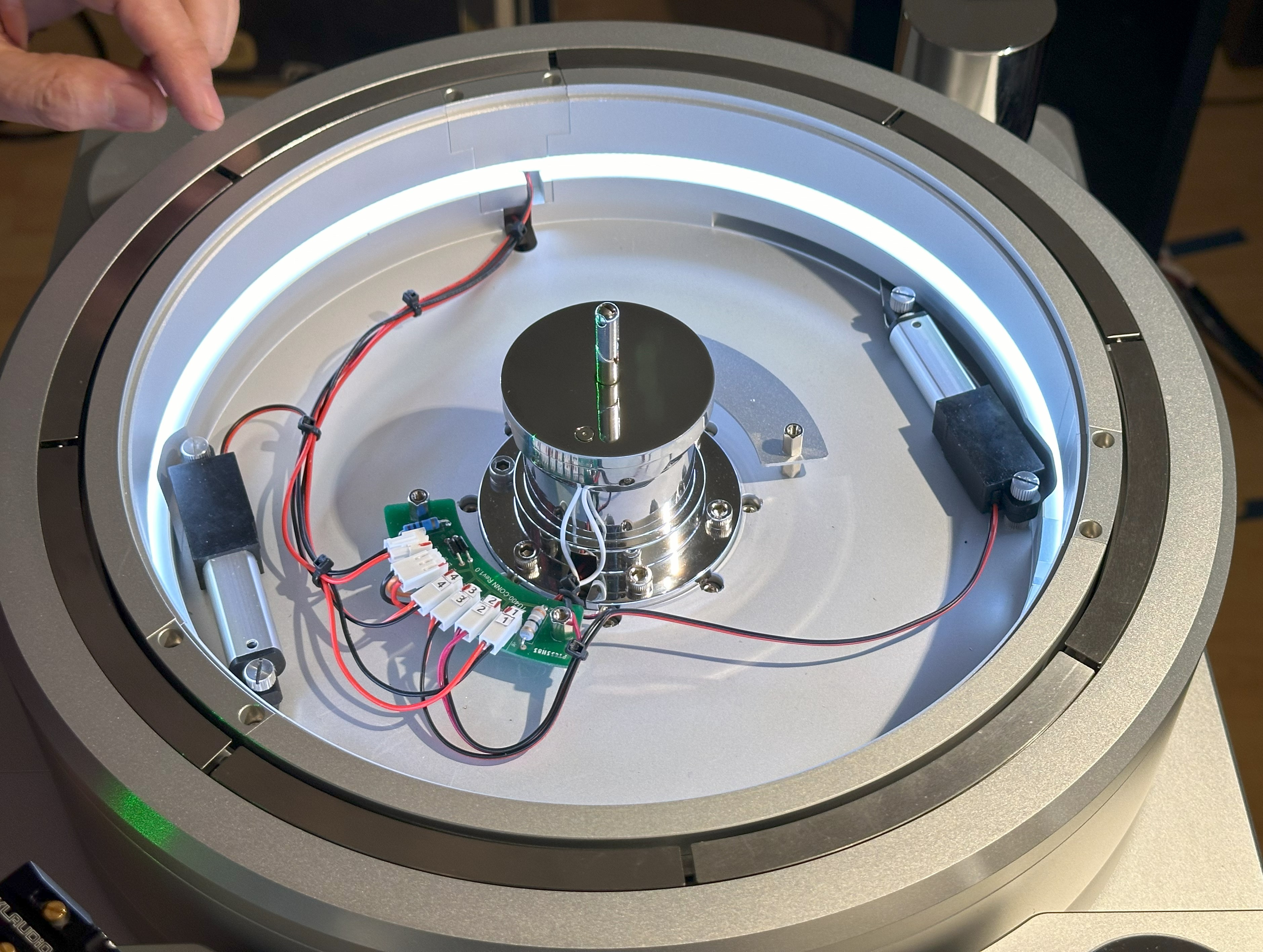
The turntable can accommodate two tonearms, with both mounting bases featuring connections to allow activation of the automated clamping system when the tonearm is engaged towards the platter.
The Magnezar operates at three speeds: 33 1/3, 45, and 78.26 rpm. The platter ramps up to speed and locks in within approximately 4 seconds. Stopping of the platter is accomplished through electronic braking.
Traditional platters rely on a mechanical thrust bearing and thrust pad. Thanks to the turntable’s magnetic levitation, this is not necessary, and mechanical transmission of motor noise to the platter is eliminated, making for an incredibly quiet listening experience.

The Magnezar was evaluated with Cheon’s pivoted tangential tonearm (KD-ARM-AP12), which has been available for approximately five years. Cartridge swapping is very quick and easy with this tonearm since it uses an SME connection for the head shell. Overhang is adjusted with a sliding ‘sled’ at the base of the tone arm. A green laser projects a straight line perpendicular to the stylus for adjusting overhang. The tonearm has previously been reviewed, so the focus of this report is on the turntable.
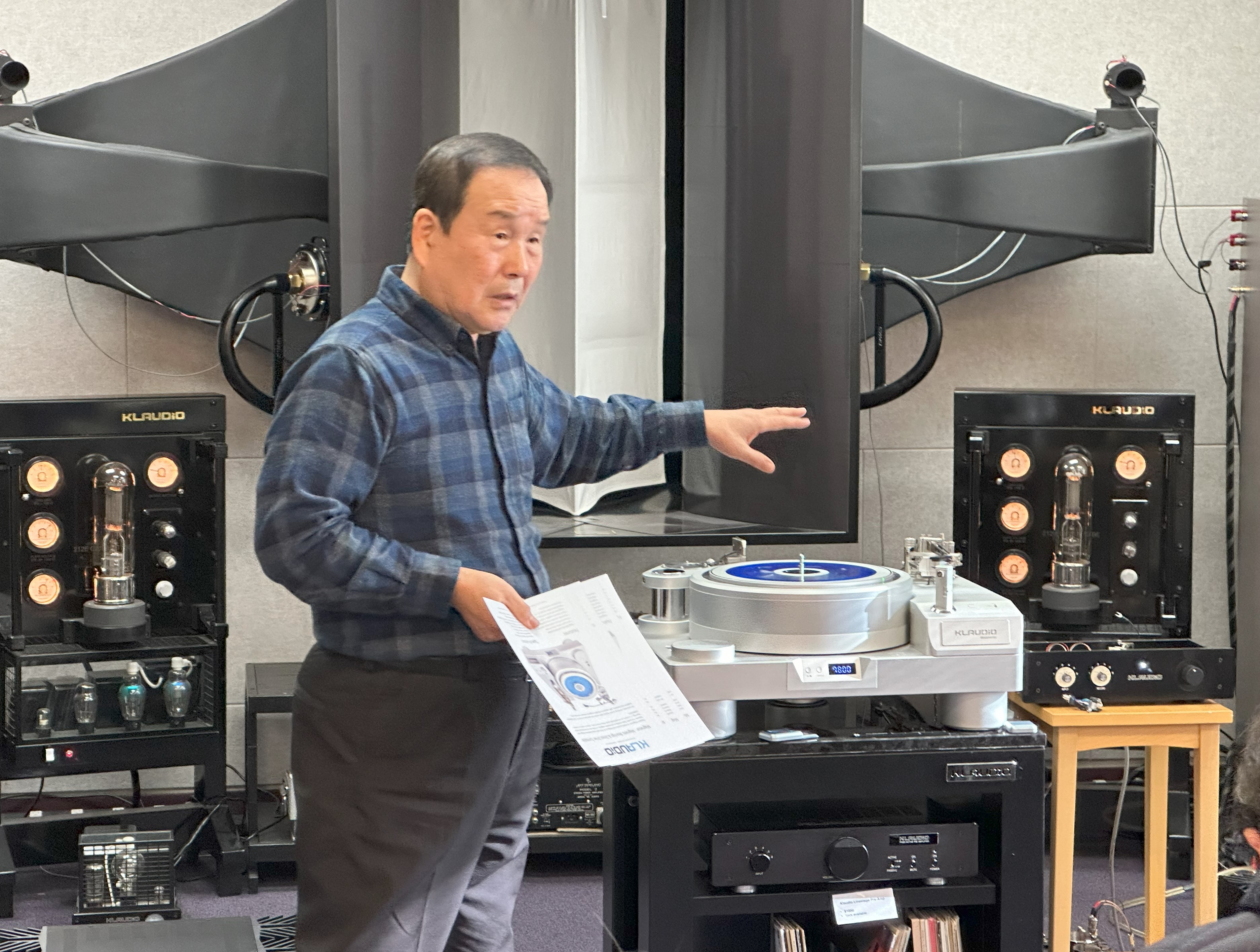
On February 3rd, Cheon showcased the first production turntable at a listening event for the Pacific Northwest Audio Society. Approximately forty members of the society were in attendance. Due to the turntable’s ability to play 78 rpm records, those were also played at the listening event along with LP’s.
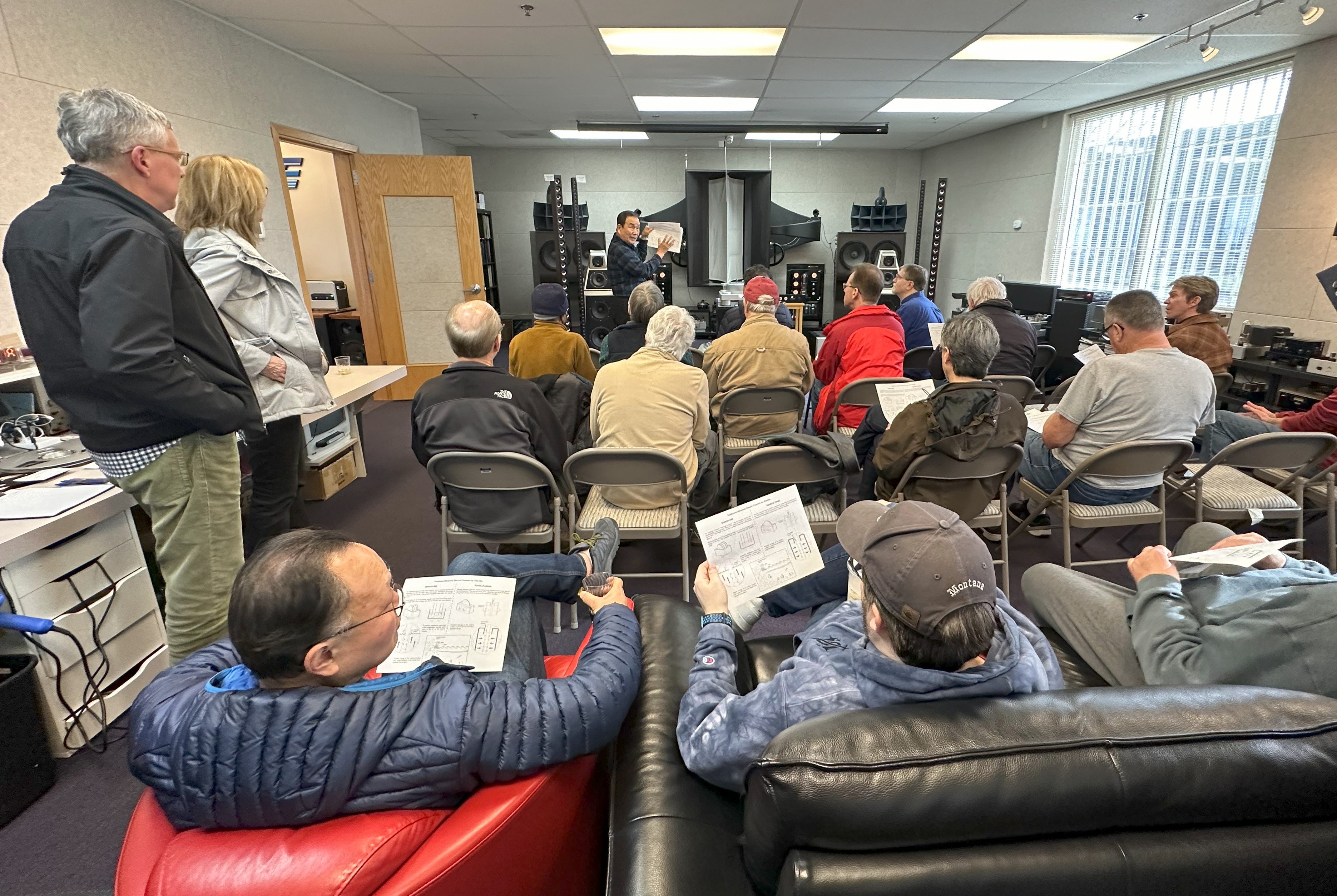
The Magnezar is available through direct sales from KLAUDiO at a cost of $60,000. For anyone interested in listening to the turntable in person, Mr. Cheon invites prospective buyers to his Koolance/KLAUDiO offices near Seattle. A more comprehensive and in depth review of the Magnezar will be conducted in the near future by Michael Fremer.
Specifications
Drive Method: Direct Drive
Braking Type: Electronic Magnetic Bearing
Motor Torque: 2 Nm/sec
Speeds: 33.33 RPM, 45 RPM, 78.26 RPM
Speed Accuracy: ~0.001% RPM
Wow and Flutter: 0.06% max
Platter Weight: 44 lb (20 kg)
Outer Clamp Pressure Weight: 10 lb (4.5 kg)
Inner Clamp Pressure Weight: 3 lb (1.3 kg)
Manufacturer Information
KLAUDiO
2840 West Valley Hwy N, Ste 101
Auburn, WA 98001
sales@klaudio.com
www.klaudio.com
(253) 249-7813











